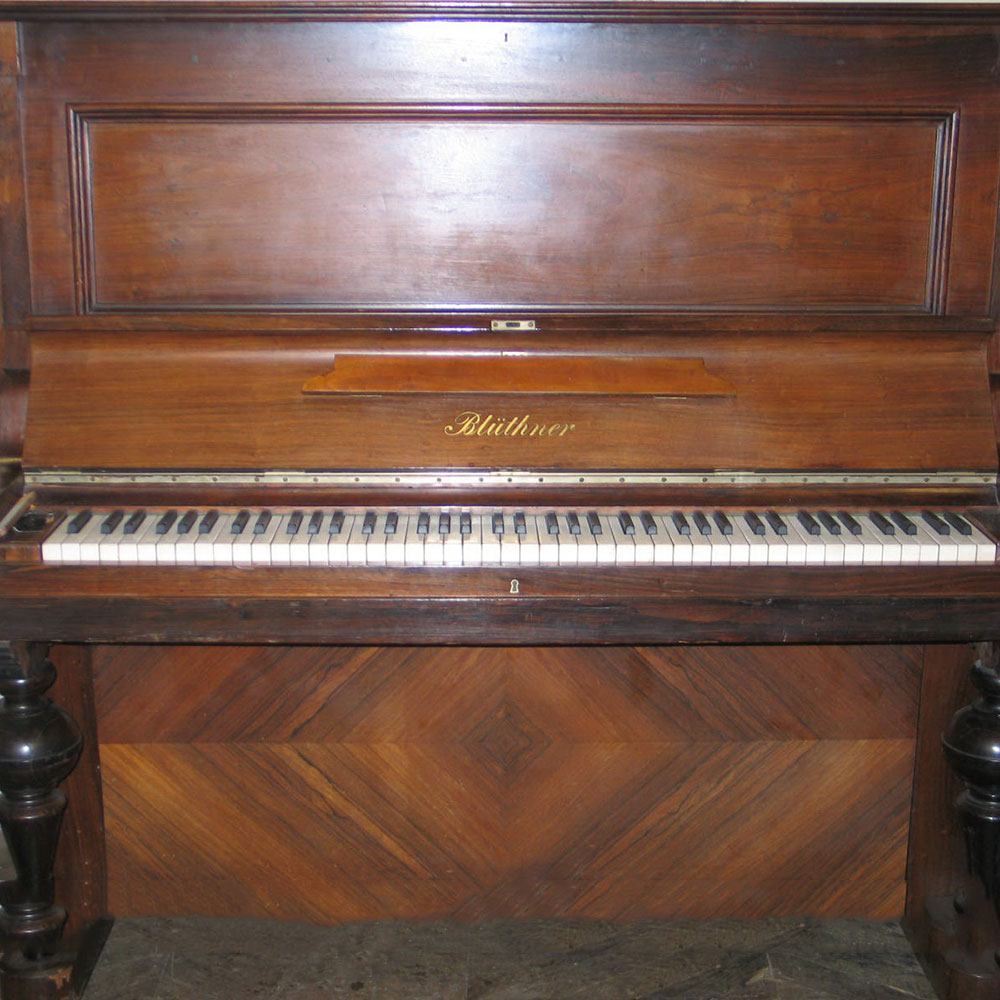Wooden framed upright pianos (1860-1920)
Wooden framed upright pianos (1860-1920) were constructed in a way that is now obsolete, as they have a wooden rather than cast-iron frame, or sometimes they have metal braces. For this reason, they often cannot be tuned to the pitch of a tuning fork (A 440Hz) in their current state. Strings are diagonal or straight rather than crossed. They have an action that uses hoppers nicknamed “bayonets” which operate dampers positioned above the strings. This system of dampers is always unsatisfactory and pianos from this period are sometimes called “singing pianos” because they continue to sound even after the dampers have been engaged. Their action is noisy and imprecise, with only 85 notes (A-A).




